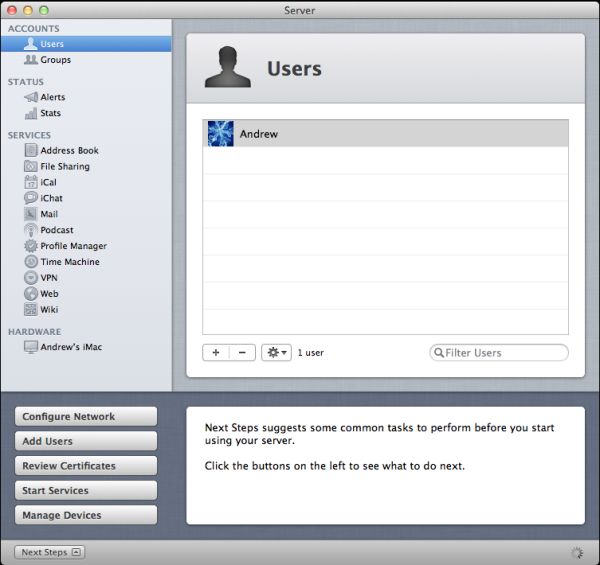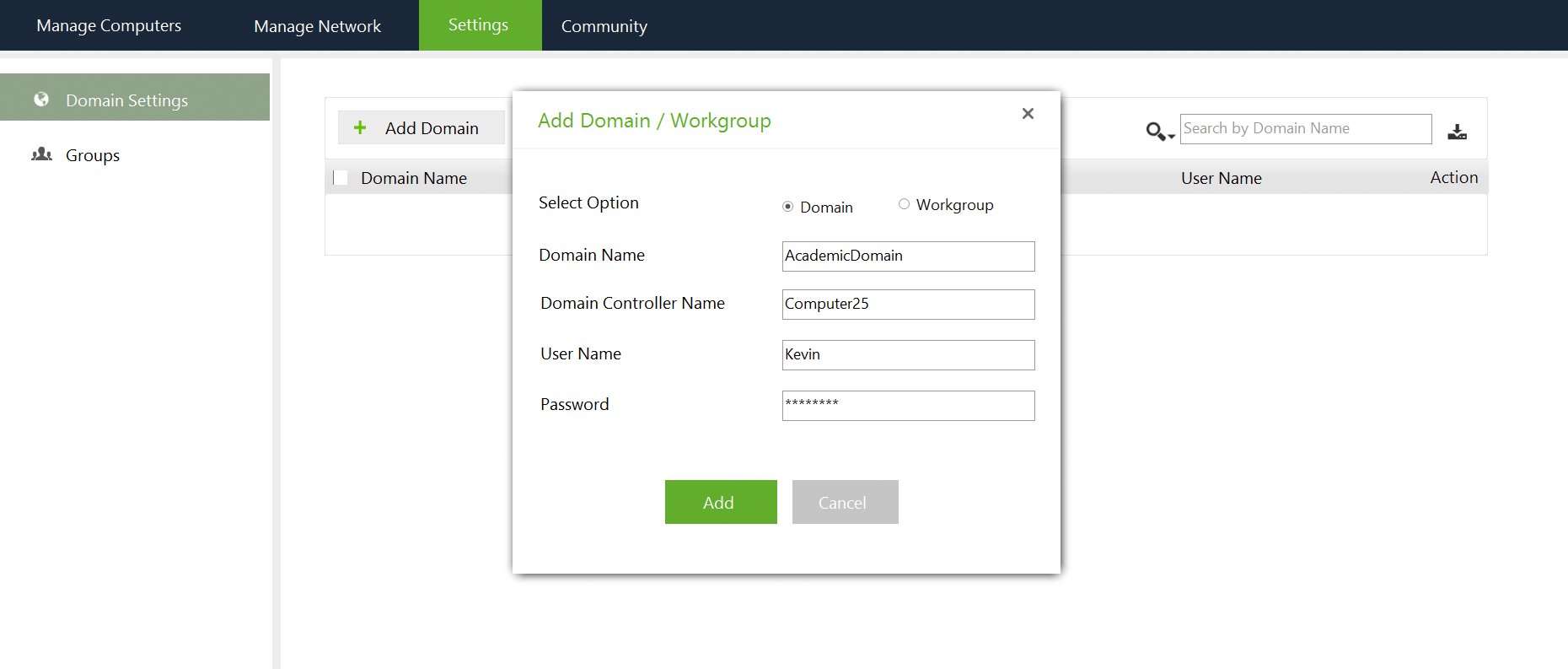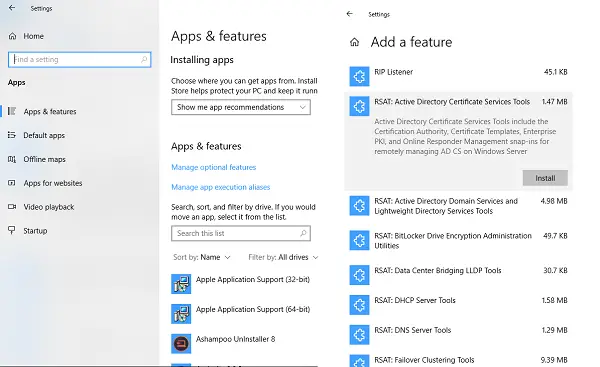Apple rolled out updates for its Server Admin Tools along with Mac OS X 10.5.3 on Wednesday. OS X Server Admin Tools 10.5.3 includes fixes for all of the apps in the suite, and also bundles in. Directory Utility - a utility for configuring access to several types of directory servers, including LDAP; built into Mac OS X. Workgroup Manager - a utility for configuring access to several types of directory servers, including LDAP; built into Mac OS X Server and one of Apple's Server Admin Tools. OpenDJ - a free, open source implementation. A separate 'server' operating system is no longer sold; the server-specific server applications and work group management and administration software tools from Mac OS X Server are now offered as macOS Server, an add-on package for macOS sold through the Mac App Store,along with Workgroup Manager 10.8, available from the Apple support web site. 10 essential Mac tools for enterprise network admins. Nmap comes in handy if you want to find out what services are enabled on a particular server. I use this when I create firewall rules so.
For the first time, SQL Server 2017 allows users to install the product on Linux. This opens the doors for working with fully-featured SQL Server database engines on MacOS through freely distributable Docker containers. With the addition of a new graphical user interface that's in public preview, Mac users can now leverage the same industry-leading database platform that has previously only been available to Windows users, all on their local computer. Let me show you how to get started in three easy steps.
1. Install Docker
The first step is to install Docker. Start at https://store.docker.com/editions/community/docker-ce-desktop-mac, and click the Get Docker button on the top right. That will download a disc image containing the application. Drag Docker.app into your Applications folder and give it a double-click to launch. Look for the Docker icon in the top menu bar. When the animation stops, Docker is ready to go. Step one: done.
2. Pull the SQL Server 2017 container
Next, start up Terminal.app. This is where you'll issue commands to Docker. Microsoft provides pre-configured images that include the Developer edition of SQL Server 2017 running on Ubuntu Linux. You can pull the most recent version with the following command.
After supplying your MacOS Administrator password, the image is downloaded.
Docker images need to be unpacked into containers, and a single image can be used to create as many identical containers as you'd like; just be sure to give them unique names. The following command will create a single container called 'sqlserver1' from the image you just downloaded. A couple of points:
Note that you'll want to provide your own strong password for the SQL Server System Administrator account. Just replace 'YourStrong!Passw0rd' with something better.
Port 1401 on the local computer will be forwarded to SQL Server's default listening port of 1433 inside the container. This will be important to remember later.
Make sure that you forward a different port to 1433 if you decide to create additional containers.
To verify that everything is working as intended, you can check the status of Docker's containers.
You should see a line for the container and, hopefully, a status of 'up.' If you see 'exited' here, go back and double check the previous commands were typed correctly. You can also try 'docker stop sqlserver1' followed by 'docker start sqlserver1' to reset the server. With the container now running, you're done with step two.
3. Install SQL Operations Studio
Microsoft is in the beginning stages of developing a cross-platform graphical user interface for SQL Server called SQL Operations Studio. Though it's still in an early public preview, SQL Ops Studio is already showing promise as a robust, lightweight interface that brings the best of SQL Server Management Studio (a venerable workhorse, but sadly Windows-only) over to the Mac and Linux platforms. The Ops Studio GitHub page will be your source of information as the project progresses. Head over to the GitHub repository, scroll down to the first section of the readme and download the MacOS zip containing the latest stable preview.
Upon Operations Studio's first launch, the Connection window will automatically prompt you for login credentials. Use 'localhost' as the name of the server, 'SA' as the user name, and fill in the password that you established when the Docker container was created. Then press the Advanced button, and scroll through the properties list until you get to the General section. Fill in the port number of 1401 here, or whichever port you're passing to SQL Server's 1433 listening port. Press OK, then Connect.
That should connect, and pass you back to the main interface. If you've ever seen Visual Studio Code, then you'll instantly recognize the interface's clean and well-organized layout. On the left is a listing of servers you're connected to. Expand the server folder to explore databases, security items and so on.
You're now up and running with the SQL Server database engine running in a Docker container, and you can manage it with Operations Studio on your Mac!
Alternatives to Web Dumper for Mac, Windows, Linux, Web, Android and more. Filter by license to discover only free or Open Source alternatives. This list contains a total of 17 apps similar to Web Dumper. List updated: 9/2/2019 11:34:00 AM. Web dumper for mac. Web Dumper for Mac. Free to try Maxprog Mac OS X 10.10/10.6/10.7/10.8/10.9 Version 3.4.3 Full Specs. However, as Web Dumper makes this whole process very fast and easy. With Web Dumper you.
Bonus step 4. Start working with your new SQL Database Engine
What good is a server without a database? Right-click the Databases folder, and choose New Query. In the SQLQuery1 tab, type in the following command.
Press the Run button to create your first database, which you should see pop up under the Databases folder. You might need to right-click the databases folder and choose Refresh if it doesn't show up immediately.
Operations Studio has a great feature called Snippets that help you quickly write common T-SQL commands. Clear out the CREATE DATABASE statement and change the Connection drop-down at the top to MyDatabase. Type 'sql' to see the list of included snippets presented in the IntelliSense popup box.
Arrow down to sqlCreateTable and press Return. Operations Studio fills in all of the T-SQL to help you create a table in the database.
Notice that all of the TableName placeholders are selected, ready for you to overwrite them with your own name. Type it once, and each one gets updated simultaneously. Press the tab key to move over to SchemaName and change that to 'dbo' (since we haven't created any other schemas at this point). Then all that's left is to modify the Column1 and Column2 placeholders on lines 10 and 11, choose appropriate data types, and add additional columns as needed.
Press the Run button when done to create your first table, in your first database, on your SQL Server instance, running on Ubuntu Linux, inside of a Docker container, on your Mac.
You're done!
Welcome from SQL Server 2017: Linux, Docker, and macOS by Adam Wilbert
','resolvedBy':'manual','resolved':true}'>Welcome from SQL Server 2017: Linux, Docker, and macOS by Adam Wilbert
Dig in deeper with my course SQL Server 2017: Linux, Docker, and MacOS
I go into way more detail on the process of working with SQL Server on these newly available platforms in my newest course here on LinkedIn Learning. In it, I demonstrate the process of setting up SQL Server on Linux, use the sqlcmd command line tool, dive deeper into Docker, and connect instances to and from other machines on the network. Or, for more information on how to use SQL Server now that you're up and running, check out Learn SQL Server 2017.

Adam Wilbert is a LinkedIn Learning / Lynda.com author of over forty courses on SQL Server, Microsoft Access, database design and development, and mapping with ArcGIS. Come say 'hi' on Twitter: @awilbert.
-->Applies to: Windows Admin Center, Windows Admin Center Preview
Windows Admin Center is a locally deployed, browser-based app for managing Windows servers, clusters, hyper-converged infrastructure, as well as Windows 10 PCs. It is a free product and is ready to use in production.
To find out what's new, see Release history.
Download now
Download Windows Admin Center from the Microsoft Evaluation Center. Even though it says “Start your evaluation”, this is the generally available version for production use.
For help installing, see Install. For tips on getting started with Windows Admin Center, see Get started.
You can update non-preview versions of Windows Admin Center by using Microsoft Update or by manually downloading and installing Windows Admin Center. Each non-preview version of Windows Admin Center is supported until 30 days after the next non-preview version is released. See our support policy for more info.
Windows Admin Center scenarios
Here are a few things you can use Windows Admin Center for:
Simplify server management Manage your servers and clusters with modernized versions of familiar tools such as Server Manager. Install in under five minutes and manage servers in your environment immediately, no additional configuration required. For details, see What is Windows Admin Center?.
Work with hybrid solutions Integration with Azure helps you optionally connect your on-premises servers with relevant cloud services. For details, see Azure hybrid services
Streamline hyperconverged management Streamline management of Azure Stack HCI or Windows Server hyperconverged clusters. Use simplified workloads to create and manage VMs, Storage Spaces Direct volumes, Software-Defined Networking and more. For details, see Manage Hyper-Converged Infrastructure with Windows Admin Center

Here's a video to give you an overview, followed by a poster giving more details: Mac vmware for amd.

Contents at a glance
Understand | Plan
|
Deploy | Configure |
Use | Connect to Azure |
Support | Extend |

Admin Tools Windows 10
Video-based learning
Here are some videos from Microsoft Ignite 2019 sessions:
Here are some videos from Windows Server Summit 2019 sessions:
And here are a few additional resources:
See how customers are benefitting from Windows Admin Center
| '[Windows Admin Center] has decreased our time/effort in managing the management system by over 75%.' - Rand Morimoto, President, Convergent Computing |
| 'Thanks to [Windows Admin Center], we can manage our customers remotely from HTML5 portal without problem and with the full integration with Azure Active Directory, we are able to increase the security thanks to the Multi-Factor Authentication.' - Silvio Di Benedetto, Founder and Senior Consultant, Inside Technologies |
| “We have been able to deploy [Server Core] SKUs in a more effective way, improving resource efficiency, security and automation while still achieving a good degree of productivity and reducing errors that can happen when relying on scripting only.” - Guglielmo Mengora, Founder and CEO, VaiSulWeb |
| “With [Windows Admin Center] customers especially in the SMB market now have an easy to use tool to manage their internal infrastructure. This minimizes administrative efforts and saves a lot of time. And the best of it: there are no additional license fees for [Windows Admin Center]!” - Helmut Otto, Managing Director, SecureGUARD |
Related products
Windows Admin Center is designed for managing a single server or cluster. It complements but does not replace existing Microsoft monitoring and management solutions, such as Remote Server Administration Tools (RSAT), System Center, Intune, or Azure Stack.

Download Remote Server Administration Tools For Mac
Stay updated




